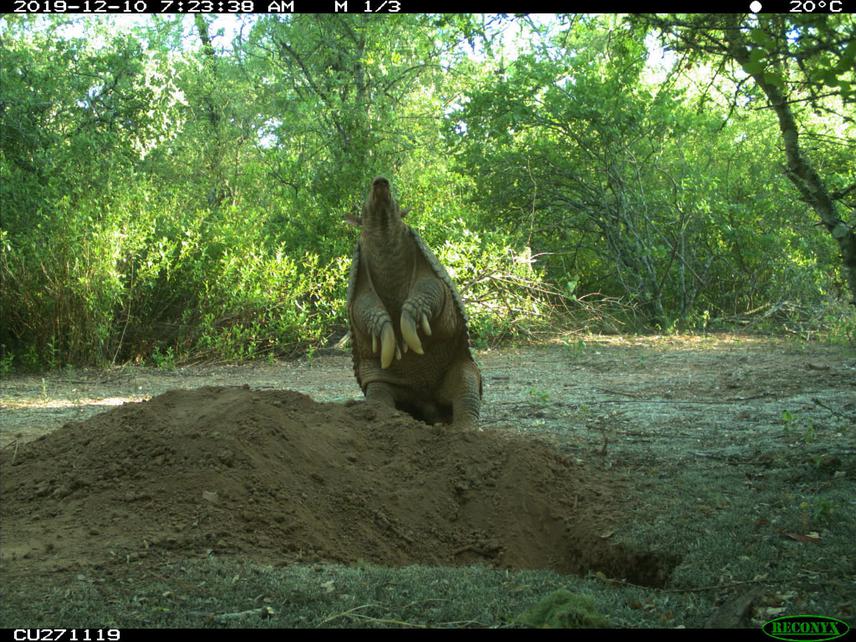Yamil E. Di Blanco
Other projects
30 Jan 2017
Population Assessment of the Giant Armadillo (Priodontes maximus) in the Chaco Region: Establishing the First Long Term Study in Argentina
2 Feb 2024
Movement Patterns and Habitat Requirements of Giant Armadillos (Priodontes maximus) in the Chaco Region of Argentina II
This project is aimed at assessing movement patterns and habitat requirements of Giant armadillos (Priodontes maximus) in areas with different levels of protection to identify and promote potential conservation corridors to connect two National Parks in the Chaco region of Argentina, the southernmost distribution of the species. Giant armadillos inhabiting both protected and unprotected areas will be captured to tag them with GPS devices to evaluate their movements and habitat selection using step selection function. This will allow identifying habitat and landscape features that are required for the effective conservation of this sensitive species in human-disturbed landscapes.

So far, this project was geographically focused in two strictly protected areas, Copo and El Impenetrable National Parks. Each area covers around 1,200 km2 of continuous and well-preserved forests, and both are considered core areas for the conservation of the remaining population of Giant armadillos in the region. Between these parks, separated by about 100 km, lay several small private lands and two not well implemented protected areas (Loro Hablador and Fuerte Esperanza Provincial Parks), where the presence of Giant armadillos have been already confirmed. However, these areas are highly affected by human activities, such as extensive cattle-ranching and hunting of wildlife, that are negatively affecting Giant armadillos in the region.
The evaluation of their movements in this landscape will help to understand how the species use disturbed habitats, and to identify potential corridors that connect these areas with the National Parks and thus help preserve this and other species with large spatial requirements. Habitat selection and movement patterns of Giant armadillo´s will be studied to identify the landscape features (e.g., habitat types, distance to water and other natural landscape attributes; human accessibility, distances to roads, distances to human settlements, etc.) that would be essential for the conservation of this rare species. Recommendations regarding where specific threats need to be mitigated (e.g., areas of a higher probability of poaching or road-kills) will be generated to improve the effectiveness of corridors and thus, the connectivity between protected areas will be improved. This information will be provided to Park managers to promote cost-effective measures to preserve this endangered species.
Additionally, through the monitoring of tagged individuals, this work will provide not only visibility to the Giant armadillo in the region by increasing awareness about the conservation status of the species and its habitat requirements, but will also serve as a powerful educational tool to influence the perception and actions of local inhabitant towards this species, and to wildlife in general.